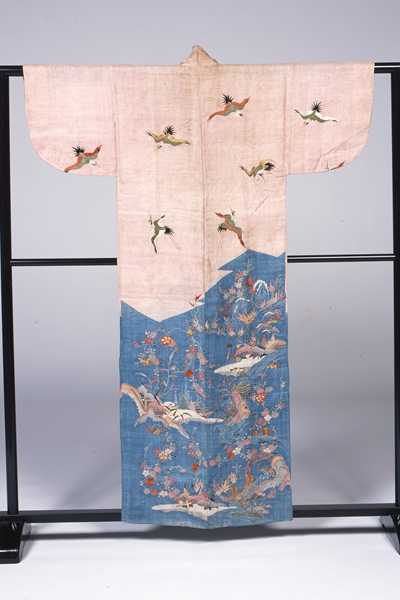
The blue-nose cloud-grained cranes costume Edo-Tokyo Museum
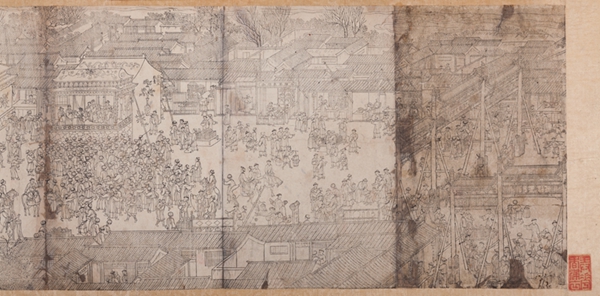
Kangxi 60-year-old Longevity Print (Partial) Beijing Capital Museum
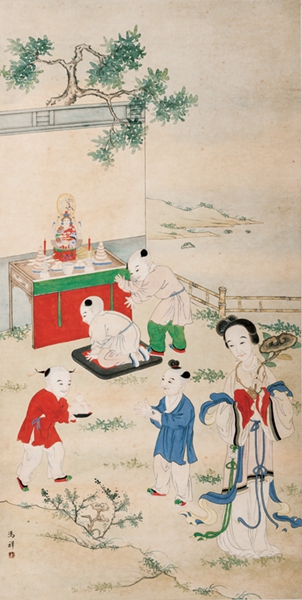
Moon Appreciation in Mid-Autumn Festival Beijing Capital Museum
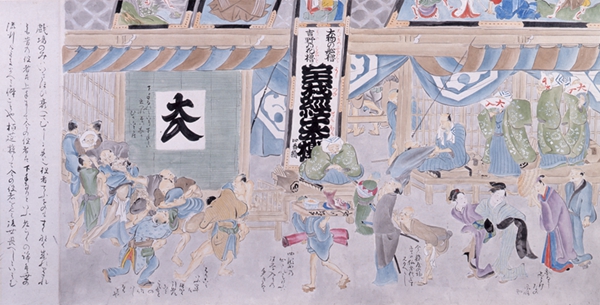
Modern Occupational Encyclopeclia middle volume (Partial) Edo-Tokyo Museum
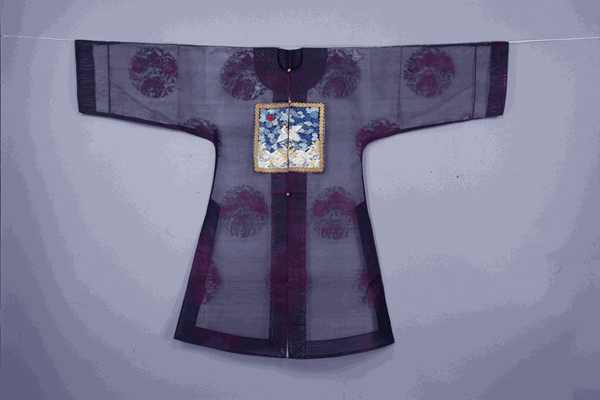
Quilts with linen-like waterside scenery design clothing Beijing Capital Museum
As one of the important achievements of the "China, Japan and South Korea International Museum Symposium", "City·Life - Tokyo and Beijing in the 18th Century" hosted by the Beijing Capital Museum and Edo-Tokyo Museum has been held at the Beijing Capital Museum from August 14th to October 7th. The creativity of the exhibition, proposed under the cooperation mode of the "China, Japan and South Korea International Museum Symposium" has been jointly planned by the curators of the two museums.
Based on Beijing and Tokyo in the 18th century, as the backgrand the exhibition, through the collection of fine cultural relics from two national urban museums and macroscopic urban functions and planning, to urban life of the people and colorful urban art, displays the splendid early Qing Dynasty and fascinating Edo during the Shogun period via the multi-perspective and multi-dimensional aspects. It took the lead in Tokyo in 2017, and moved to Beijing on August 14th, this year.
"When the 2017 exhibition was held in Tokyo, exhibits from the Beijing Capital Museum accounted for 2 / 3 of the totals; this time in Beijing, those of the Edo Tokyo Museum of Tokyo accounted for 2 / 3," Said BAI Jie, secretary of the Party Committee of the Capital Museum. The event has introduced 181 pieces (sets) of exhibits in total, including 112 pieces (sets) from Japan. Through various types of exhibits, such as picture materials, folklore materials and handicrafts, the exhibition shows the urban appearance, urban life and various artistic developments of Beijing and Tokyo in the 18thcentury, introducing the structure, life and culture of the two cities to the audiences, and exploring the bilateral similarities and differences. An era and two cities, the differences and similarities of material life reflect the individuality and commonality of the cultures of the two countries.
In the 18th century, Tokyo was under the control of the Edo Shogun, and Beijing was in its prosperous period of emperors of Kangxi and Qianlong. The two places were politically stable and rich in life, showcasing the urban commonality of oriental culture. The Beijing Capital Museum and the Edo Tokyo Museum in Tokyo, as representatives of the city museums in their respective capitals, jointly study the impact of urban development history on people's lives, and focus on the display of historical culture and people's lives in the same period of China and Japan, playing the characteristic roles of the city museum exhibition. Therefore, the exhibition is divided into three parts: urban construction, urban life and urban art, comparing the history, life and culture of the 18thcentury Tokyo and Beijing cities in all aspects.
"The reason for the contrast mode is because we understand the knowledge structure through known to unknown. I hope that the audiences can move from the life of their own city to another city in the same period so as to understand their lives." ZHANG Liang, the curator of the exhibition from Chinese side, made the comment, especially in the "urban life" part, from the seven parts as residence, clothing, business, festivals, parenting, education and entertainment, the exhibition shows and compares the historical fragments of the twin cities.
The two long scrolls of the Kangxi 60-year-old Longevity Printand the Kidai shoran (Depicting the Prosperity of the Nihonbashi distict) from Japan side-by-side have opened the curtain of "urban life"; the blue-nose cloud-grained cranes, the summer working costume of first degree civilian officials of the Qing Dynasty and the quilts with linen-like waterside scenery design clothing of the Edo urban women echoed each other; the Modern Occupational Encyclopedia (Ukiyo-e Edition) depicted a tobacco-bag store, a tobacco shop, and a monkey-training entertainer and others who passed by the front of the store, these images can be compared with the corresponding images in the Old Beijing 360-Job Catalogue. The exhibition spans the Double Seventh Festival and the Mid-Autumn Festival. Therefore, the exhibition focused on comparing the customs of the two countries on the Double Seventh and Mid-Autumn Festival in the festival section. On the two sides of a bright moon, it lays the pictures of admiring moon of China and Japan. In this way, the audiences can more intuitively and deeply compare the characteristics and styles, commonalities and features of the same historical node and the two cities in the same scene, thus deepening the perception of their own and the external world.
"Spending the Mid-Autumn Festival in two countries alike, but there are still some differences in festival customs. For example, China's August 15th is the Mid-Autumn Festival according to its lunar calendar, and Chinese will enjoy moon cakes on this day, while Japan's moon appreciation is on August 15th and September 13th, and they will eat small snacks and rice cakes; for the Double Seventh Festival, China has a wellbehaved custom, an activity for women to engage in weaving and embroidery competitions. However, Japan will write the wishes of blessings and auspicious wishes on colored paper and lie on the bamboo poles" said by ZHANG Liang.
In addition, the exhibition also included the abacus and Go game, and printed boxes from Chinese legends and mythical figures. Terunobu Fujimori, curator of Edo-Tokyo Museum said that Japan and China have a long history of cultural exchanges. Even in the Edo period, Japan has begun to close its doors, but cultural exchanges never stopped. ZHANG Liang believed that Part of the commonality of the two cities is the mutual influence of the two-sided culture. As the neighboring country, the two countries possess a very long history of exchanges, and cultural interactions have always existed. This is also what we want to convey to the audiences via this exhibition.



















